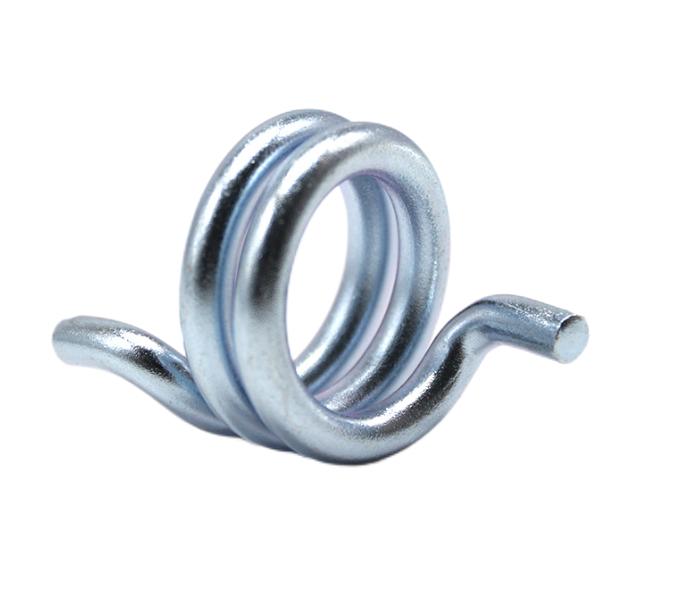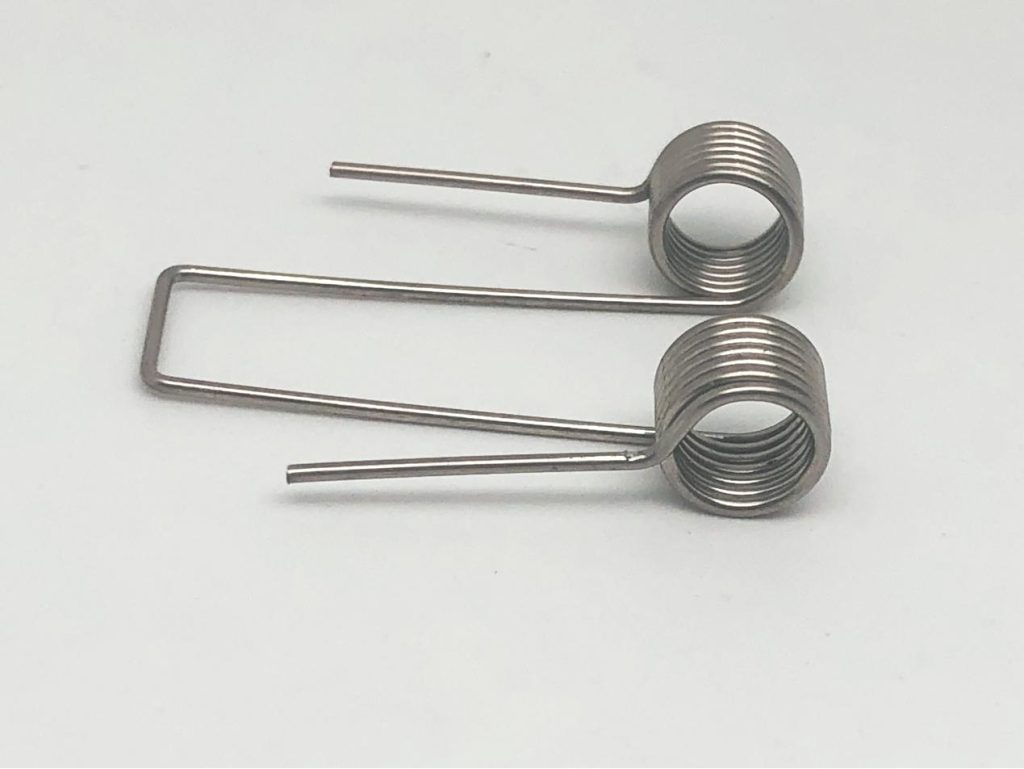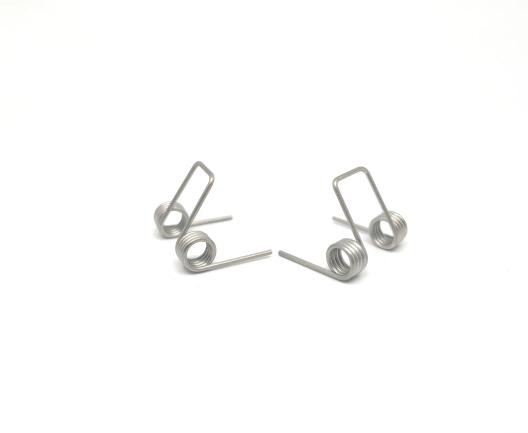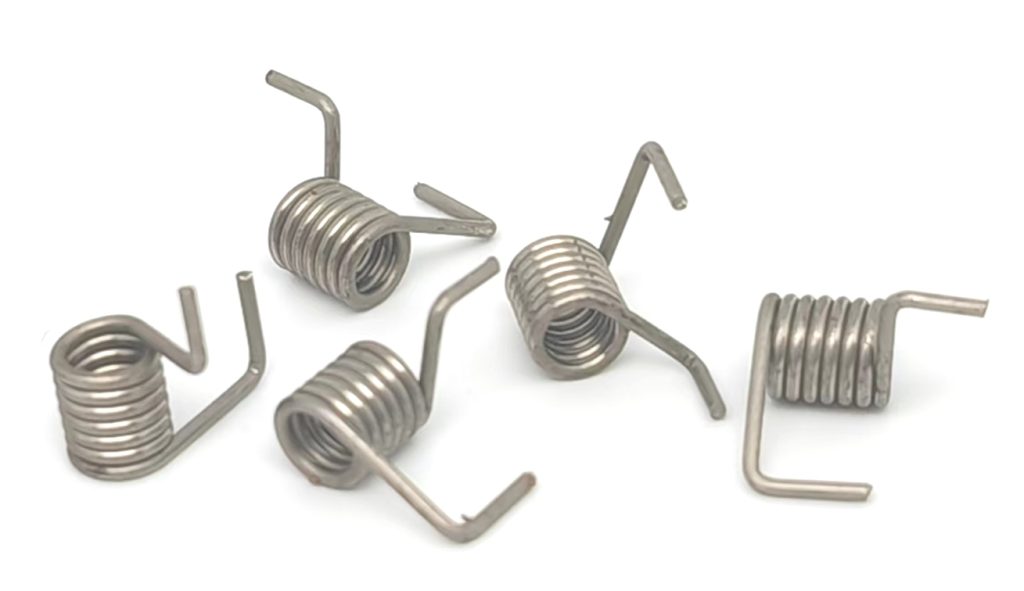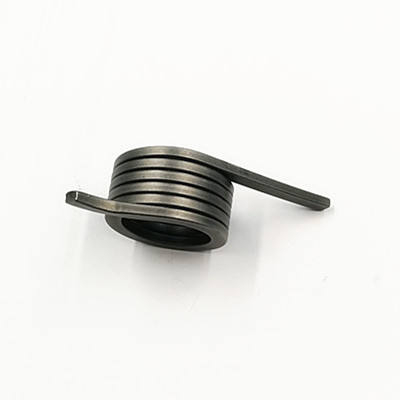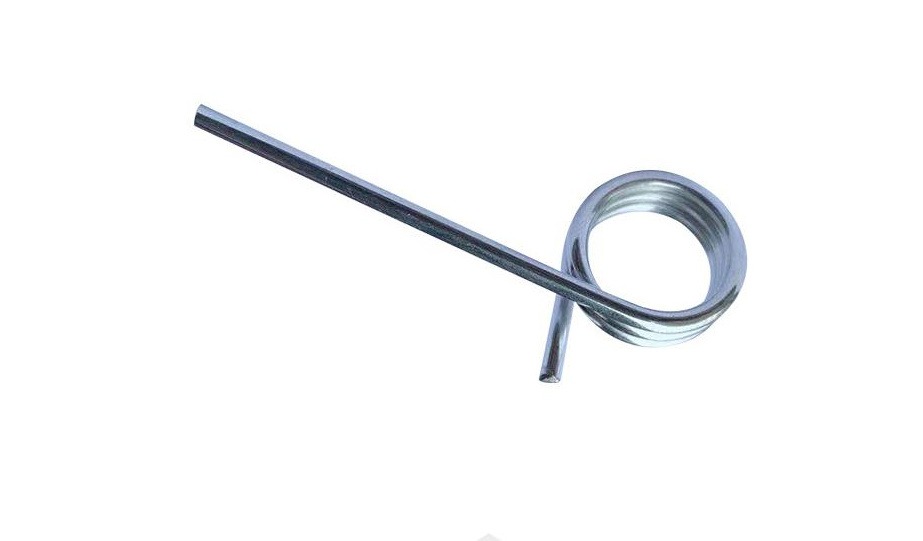Quality Control and Testing Techniques in Torsion Springs
Table of Contents
Torsion springs are used to provide resistance to rotational forces or torque. Their applications span from garage doors and automotive engines to machinery and household devices. Ensuring the quality and performance of torsion springs is critical for the safety and efficiency of these systems. This article delves into the key quality control and testing techniques used to evaluate torsion springs.

Understanding Torsion Springs
This chart provides a comprehensive overview of torsion springs, covering their fundamental characteristics.
| Aspect | Description |
| Definition | Torsion springs are helical springs that exert a torque or rotary force when twisted. |
| Properties | 1. Provide resistance to rotational forces or torque 2. Store mechanical energy when twisted 3. Return to original position when the force is released |
| Applications | 1. Garage doors 2. Automotive engines 3. Clocks and watches 4. Machinery 5. Various household items |
| Materials | 1. Stainless steel 2. Music wire 3. Phosphor bronze 4. Other high-strength, durable materials resistant to environmental factors |
| Design Considerations | 1. Wire Diameter: Influences strength and flexibility 2. Coil Diameter: Affects torque and spring rate 3. Number of Coils: Determines the amount of torque 4. Leg Length and Angle: Customizable torsion springs to fit specific applications |
| Manufacturing Processes | 1. Coiling: Winding the wire into a helical shape 2. Heat Treatment: Stress relieving and tempering to enhance mechanical properties 3. Surface Treatment: Shot peening or coating for improved fatigue life and corrosion resistance |
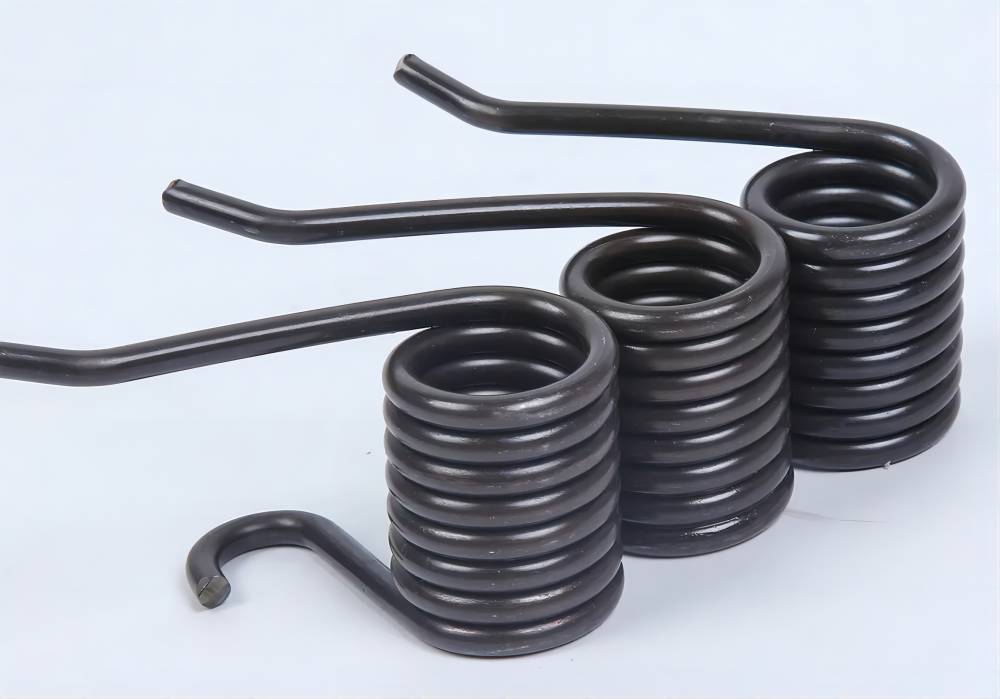
Quality Control in Manufacturing of Torsion Springs
Quality control (QC) in the manufacturing of torsion springs is a critical process that ensures each spring meets stringent specifications and performs reliably in its intended application.
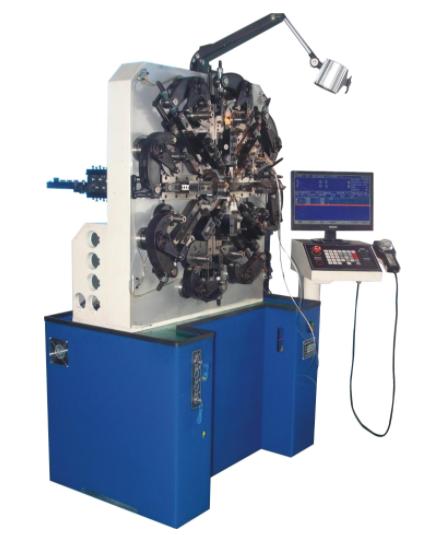
1. Material Inspection
The foundation of a high-quality torsion spring is the raw material from which it is made. Common materials include stainless steel, music wire, and phosphor bronze, chosen for their strength, durability, and resistance to environmental factors. QC in material inspection involves:
- Chemical Composition Analysis: Ensuring the material meets the required chemical composition for desired mechanical properties and corrosion resistance.
- Mechanical Properties Testing: Verifying tensile strength, yield strength, and elongation to ensure the material can withstand the intended loads.
- Surface Finish Examination: Checking for surface defects such as scratches, pits, or rust that could compromise the spring’s performance.
2. Dimensional Accuracy
Precision in the dimensions of torsion springs is crucial for their proper function. Dimensional accuracy involves:
- Wire Diameter Measurement: Using micrometers or laser micrometers to ensure consistent wire diameter throughout the production run.
- Coil Diameter and Pitch: Measuring the coil diameter and the spacing between coils using calipers and optical comparators to ensure uniformity.
- Leg Length and Angle: Checking the leg length and angle to confirm they meet design specifications.
3. Coiling Process Monitoring
The coiling process, where the wire is wound into the helical shape of the spring, must be tightly controlled to prevent defects. Key QC measures include:
- Automated Coiling Machines: Utilizing machines with real-time monitoring systems to maintain consistent coiling parameters.
- In-Process Inspections: Conduct periodic inspections during the coiling process to detect and correct any deviations immediately.
- Data Logging: Recording coiling parameters for traceability and future analysis.
4. Heat Treatment
Heat treatment processes such as stress relieving and tempering are essential to enhance the mechanical properties of torsion springs. QC in heat treatment includes:
- Temperature Control: Ensuring precise temperature settings and uniform heating in ovens or furnaces.
- Time Monitoring: Maintaining accurate timing for each heat treatment stage to achieve the desired material properties.
- Post-Treatment Testing: Performing hardness tests and tensile tests to verify the effectiveness of the heat treatment.
5. Surface Treatment
Surface treatments like shot peening and coating improve the fatigue life and corrosion resistance of torsion springs. QC measures for surface treatment include:
- Shot Peening: Verifying the intensity and coverage of shot peening to ensure a uniform compressive stress layer on the spring surface.
- Coating Application: Checking the thickness and adhesion of protective coatings to ensure durability and resistance to environmental factors.
- Surface Inspection: Conducting visual and microscopic inspections to identify any surface defects or irregularities.
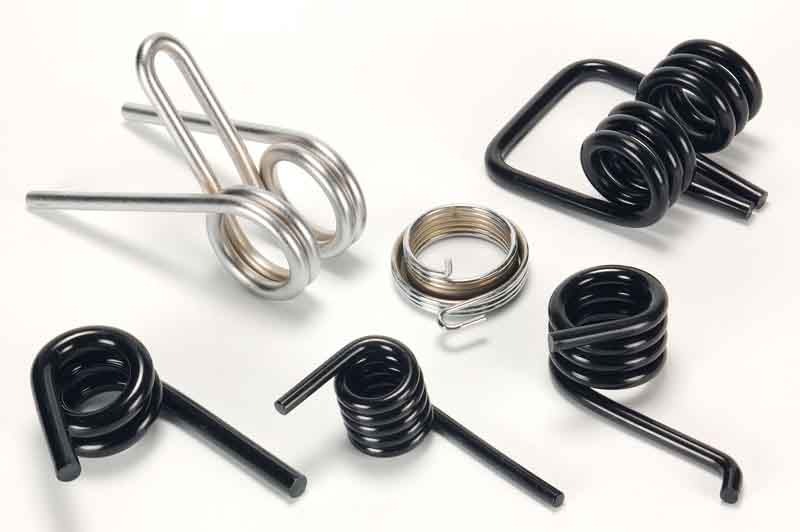
Key Testing Techniques for Torsion Springs
1. Torque Testing
Torque testing measures the torque required to twist the spring to a specified angle. This test is crucial for verifying that the spring can deliver the expected performance under operational conditions.
- Equipment: Torque testers equipped with digital readouts and automated systems provide precise measurements.
- Procedure: The spring is mounted on the tester, and a controlled force is applied to twist the spring. The torque required to achieve the desired angle is recorded.
- Standards: Ensuring compliance with industry standards (e.g., ASTM, ISO) for torque testing is essential for consistency and reliability.
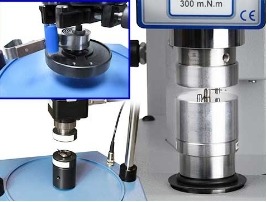
2. Cycle Testing
Cycle testing assesses the durability and fatigue life of the spring by subjecting it to repeated cycles of loading and unloading. This simulates real-world usage and identifies potential failure points.
- Equipment: Automated cycling machines that can apply and release torque repeatedly over a set number of cycles.
- Procedure: The spring is cycled through its range of motion to a specified number of cycles, often in the tens of thousands or more, to simulate extended use.
- Outcome: Monitoring for signs of wear, deformation, or failure helps determine the spring’s lifespan and reliability.
3. Load Testing
Load testing measures the spring’s ability to withstand applied loads without permanent deformation. It helps verify the spring’s load capacity and elastic limits.
- Equipment: Load testers with digital force gauges to measure the applied force.
- Procedure: A load is applied to the spring incrementally, and the corresponding deformation is measured. The load is then released to check if the spring returns to its original shape.
- Results: Identifying the maximum load the spring can handle without permanent deformation is crucial for ensuring safety and performance.
4. Dimensional Testing
Dimensional testing ensures that the physical dimensions of the spring meet design specifications. This includes measurements of wire diameter, coil diameter, pitch, and leg length.
- Equipment: Precision instruments such as micrometers, calipers, and coordinate measuring machines (CMM).
- Procedure: Measuring each dimension of the spring and comparing it against the specified tolerances.
- Importance: Ensuring dimensional accuracy is critical for the spring to fit and function correctly in its application.
5. Visual Inspection
Visual inspection is a critical step in identifying surface defects such as cracks, pitting, or corrosion. It helps ensure the spring’s surface integrity and overall quality.
- Tools: Magnifying tools, microscopes, and sometimes advanced imaging systems.
- Procedure: Inspecting the spring visually or under magnification to detect any surface irregularities or defects.
- Focus: Looking for signs of manufacturing defects, material inconsistencies, or damage that could affect performance.
6. Hardness Testing
Hardness testing determines the material’s resistance to deformation. It is crucial for assessing the effectiveness of heat treatment processes and ensuring the spring’s durability.
- Equipment: Hardness testers such as Rockwell, Vickers, or Brinell hardness testers.
- Procedure: Applying a controlled force to an indenter that penetrates the spring’s surface and measuring the depth or size of the indentation.
- Correlation: Correlating hardness with other mechanical properties such as tensile strength and wear resistance.
Advanced Technologies for Quality Control and Testing in Torsion Springs
The manufacturing and testing of torsion springs have significantly advanced with the integration of modern technologies. These advancements ensure higher precision, reliability, and efficiency in quality control and testing processes.
1. Automated Inspection Systems
Automated inspection systems utilize cameras, sensors, and artificial intelligence (AI) to perform precise and rapid inspections of torsion springs.
- High-Precision Cameras and Sensors: Capture detailed images and measurements of springs, detecting even minute defects.
- AI and Machine Learning: Analyze data to identify patterns and anomalies, improving defect detection accuracy over time.
- Benefits: Increased inspection speed, reduced human error, and consistent quality assurance.
2. Non-Destructive Testing (NDT)
NDT techniques allow for the detection of internal and surface defects without damaging the spring, ensuring that all parts meet the required standards.
Ultrasonic Testing
- Principle: Uses high-frequency sound waves to detect internal flaws.
- Application: Identifies voids, cracks, and other discontinuities within the spring material.
- Benefits: Provides a clear picture of the internal integrity without causing damage.
Eddy Current Testing
- Principle: Employs electromagnetic fields to detect surface and near-surface defects.
- Application: Finds cracks, inclusions, and other surface anomalies.
- Benefits: Fast and effective for inspecting conductive materials like metal springs.
Magnetic Particle Inspection
- Principle: Utilizes magnetic fields and ferrous particles to reveal surface and slightly subsurface defects.
- Application: Detects cracks and other surface defects in ferromagnetic materials.
- Benefits: Simple, cost-effective, and highly sensitive to surface discontinuities.
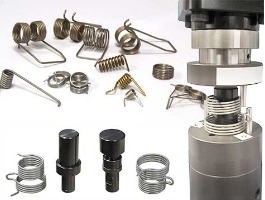
3. Digital Twin Technology
Digital twin technology creates virtual replicas of physical torsion springs, enabling real-time monitoring and predictive maintenance.
- Virtual Models: Digital twins are created using data from the physical spring, including its design specifications and operational parameters.
- Real-Time Monitoring: Sensors on the physical spring feed data to the digital twin, which simulates the spring’s behavior under various conditions.
- Predictive Maintenance: By analyzing the digital twin, potential issues can be identified and addressed before they lead to failures, enhancing reliability and lifespan.
4. Statistical Process Control (SPC)
SPC employs statistical methods to monitor and control the manufacturing process, ensuring consistent quality and identifying areas for improvement.
- Data Collection: Continuous collection of data from the manufacturing process, such as measurements of spring dimensions and performance parameters.
- Analysis Tools: Use of control charts, histograms, and other statistical tools to analyze the data.
- Process Optimization: Identification of trends and variations in the manufacturing process, enabling timely corrective actions and process improvements.
5. 3D Laser Scanning
3D laser scanning provides highly accurate dimensional measurements and surface analysis of torsion springs.
- Precision Measurement: Captures detailed 3D profiles of the spring’s surface and dimensions.
- Surface Defect Detection: Identifies surface irregularities, such as cracks, pits, or deformations.
- Rapid Analysis: Quickly generates comprehensive data sets for analysis, reducing inspection times.
6. Automated Load and Torque Testing
Advanced automated systems for load and torque testing ensure precise and repeatable testing conditions.
- Automated Load Testers: Apply controlled loads to the spring and measure its response, ensuring consistency and accuracy.
- Automated Torque Testers: Measure the torque required to twist the spring, providing precise data on the spring’s performance.
- Data Logging and Analysis: Record test results in real time for detailed analysis and traceability.
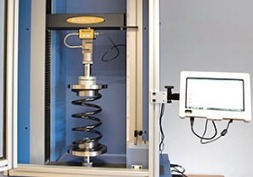
In summary, by implementing rigorous testing methods such as load testing, fatigue testing, and dimensional inspections, manufacturers can identify potential defects and ensure that each spring meets stringent industry standards. Advanced testing technologies, such as non-destructive testing and computerized simulations, further enhance the precision and effectiveness of quality control processes.


